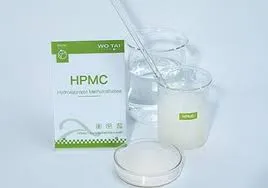
Nov . 22, 2024 15:37 Back to list
hydroxypropyl methyl cellulose cas number
Understanding Hydroxypropyl Methyl Cellulose CAS Number and Applications
Hydroxypropyl Methyl Cellulose (HPMC) is a synthetic polymer widely used in various industries, mainly due to its unique properties that offer several advantages in application. This compound is classified under the group of cellulose ethers and is known for its solubility in cold and hot water, which makes it an essential ingredient in pharmaceuticals, food products, cosmetics, and construction materials. The Chemical Abstracts Service (CAS) number for Hydroxypropyl Methyl Cellulose is 9004-65-3, which serves as a unique identifier for this compound in scientific literature and industry.
The Structure and Properties of HPMC
HPMC is derived from cellulose, one of the most abundant organic polymers found in nature. The modification of cellulose to create HPMC involves the substitution of hydroxyl groups with hydroxypropyl and methyl groups. This modification substantially enhances the solubility of the polymer and alters its viscosity, allowing it to form gels and emulsions depending on concentration and temperature.
The physical properties of HPMC, including its water retention and film-forming capabilities, make it a versatile component. In addition to being a thickening agent, it acts as a stabilizer, binder, and emulsifier in various formulations. The ability to control the viscosity and modify texture is crucial in products that require consistent quality and performance.
Applications of Hydroxypropyl Methyl Cellulose
1. Pharmaceuticals HPMC is frequently used in the pharmaceutical industry as a matrix forming agent in controlled-release tablets, ensuring that the active ingredients are released at a predetermined rate. Additionally, its ability to enhance the bioavailability of drugs has made it a popular choice in numerous formulations. HPMC serves as a protective coating for tablets and capsules, improving their stability and swallowability.
2. Food Industry In food applications, HPMC acts as a thickener, stabilizer, and emulsifying agent. It is commonly found in sauces, dressings, and baked goods, where it enhances texture and mouthfeel. Its ability to retain moisture ensures that products remain fresh for longer, thus extending shelf life.
hydroxypropyl methyl cellulose cas number

3. Cosmetics and Personal Care Products The cosmetic industry utilizes HPMC for its thickening and stabilizing properties. It is found in a variety of products, including shampoos, lotions, and creams, where it helps maintain a desirable consistency. Moreover, HPMC's moisturizing capabilities contribute to the overall skin feel of these products.
4. Construction In the construction industry, Hydroxypropyl Methyl Cellulose is used as a thickening and water-retention agent in mortars and drywall compounds. Its ability to improve workability and extend the open time of mixtures makes it vital for the application of tile adhesives, cement-based plasters, and other materials.
5. Agriculture HPMC is also finding its way into agricultural applications, where it is used as a coating for seeds and fertilizers, improving adherence and release characteristics. This can enhance the efficiency of nutrient delivery and increase crop yields.
Safety and Regulation
HPMC is generally recognized as safe (GRAS) when used appropriately. Regulatory agencies such as the U.S. Food and Drug Administration (FDA) and the European Food Safety Authority (EFSA) have approved its use in food and pharmaceutical products. However, as with any additive, it is essential to adhere to prescribed usage levels to avoid potential adverse effects.
Conclusion
Hydroxypropyl Methyl Cellulose (CAS number 9004-65-3) is a versatile compound with a wide range of applications across various industries. Its unique properties, such as solubility, viscosity modification, and water retention, make it an invaluable ingredient in pharmaceutical, food, cosmetic, construction, and agricultural applications. As research continues to uncover additional benefits and applications of HPMC, its usage is likely to expand even further, solidifying its role in innovative solutions within these industries. Understanding the properties and uses of HPMC not only highlights its importance but also showcases how synthetic modifications of natural polymers can lead to significant technological advancements.
-
Versatile Hpmc Uses in Different Industries
NewsJun.19,2025
-
Redispersible Powder's Role in Enhancing Durability of Construction Products
NewsJun.19,2025
-
Hydroxyethyl Cellulose Applications Driving Green Industrial Processes
NewsJun.19,2025
-
Exploring Different Redispersible Polymer Powder
NewsJun.19,2025
-
Choosing the Right Mortar Bonding Agent
NewsJun.19,2025
-
Applications and Significance of China Hpmc in Modern Industries
NewsJun.19,2025







